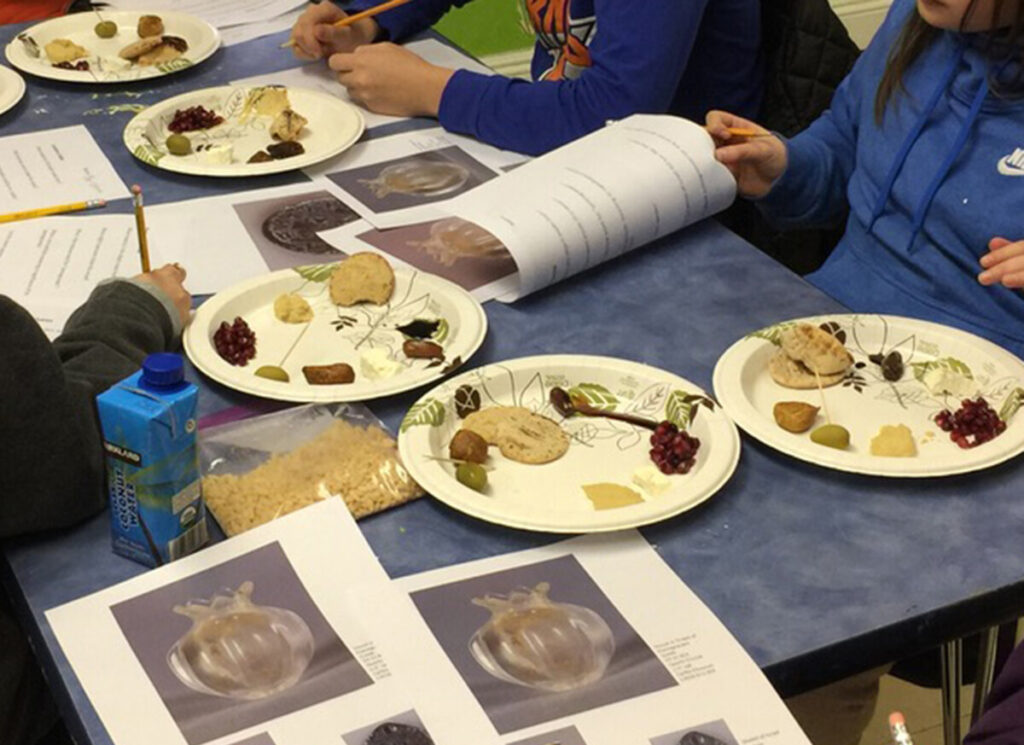Lesson Objectives: In this unit, students will learn about the significance and symbolism of food in Jewish history. They will discuss the role of food in Jewish holidays and traditions and contemporary Middle Eastern cuisine. During this unit’s hands-on project, students will sample modern Middle Eastern foods.
Guiding Thematic Questions:
- What are some ways that one might show hospitality?
- How does food play into hosting, holidays, and traditions?
- In what ways can food be symbolic?
Historical Context:
- The typical diet of an ancient Israelite consisted primarily of bread, grains, and legumes. Breads were made of barley flour and later, during the Second Temple period, wheat flour. Challah was eaten for ritual purposes and flatter loaves were eaten more commonly and was sometimes seasoned with fennel and cumin or dipped in vinegar, olive oil, or sesame oil. Stews of lentils, beans, onion, garlic, and leeks were another common food item. Israelites drank goat and sheep milk but wine was the most popular beverage. Figs and grapes were commonly eaten as well as pomegranates, dates, almonds, and other fruits and nuts more occasionally. Goat and mutton meat was eaten rarely by wealthy Israelites and on special occasions, and was usually prepared in stews or soups or roasted.
- Israelite cuisine was also shaped by products introduced by their neighbors. Rice was introduced during the Persian era, more spices and varieties of fish became common during the Hellenistic period, and sugar was introduced during the Roman period.
- Modern Jewish cooking has developed in various diaspora communities so there’s a wide variety of “Jewish food” today. One of the few dishes that originated in Ancient Israel that still survives today is cholent, a stew dating back to the Second Temple era.
Fun Facts:
- In modern Hebrew, the word for grenade is the same as the word for pomegranate, rimon (רִמּוֹן)
- The herb hyssop, a cousin of Oregano, is used to make “za’atar,” a common Middle Eastern herb mix.
- In 2005, the Center for Sustainable Agriculture at the Arava Institute for Environmental Studies successfully germinated 2,000 years old date seeds excavated from ancient archaeological sites at Masada, Qumran, Wadi Makukh, and Wadi Kelt and planted at Kibbutz Ketura. The six seeds were named for biblical figures— Adam, Jonah, Uriel, Boaz, Judith and Hannah. The resulting tree was named Methuselah after the oldest Biblical character who lived to the age of 969. Methuselah revived the Judean date palm tree which had been extinct for over 800 years.
Object Images:

Perfume Vessel in Shape of Date
Roman
1st-2nd century CE
Glass
2.5” tall
Carlos Museum, Emory University
2016.003.002
(not currently on display)
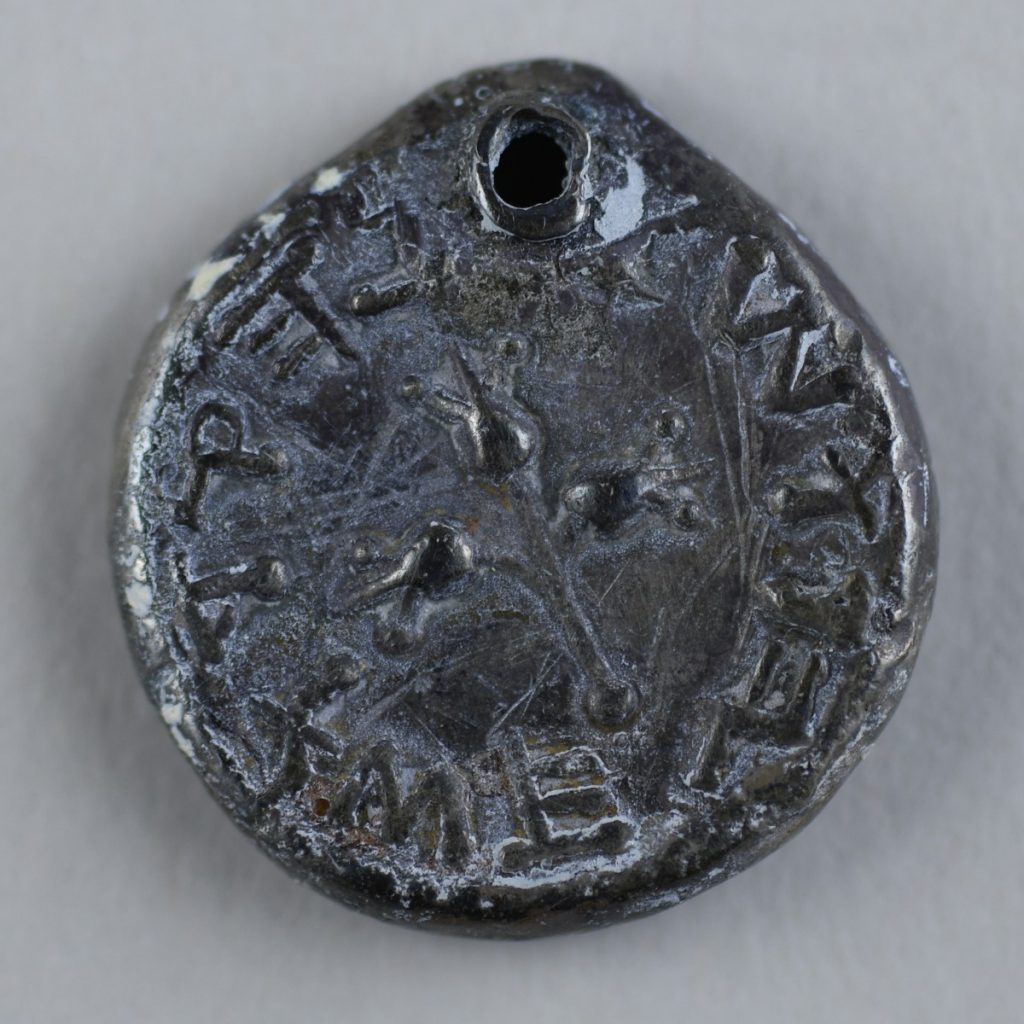
Shekel of Israel with Image of Pomegranates
Roman
67-68 CE
Silver
1” diameter
Carlos Museum, Emory University
x.546
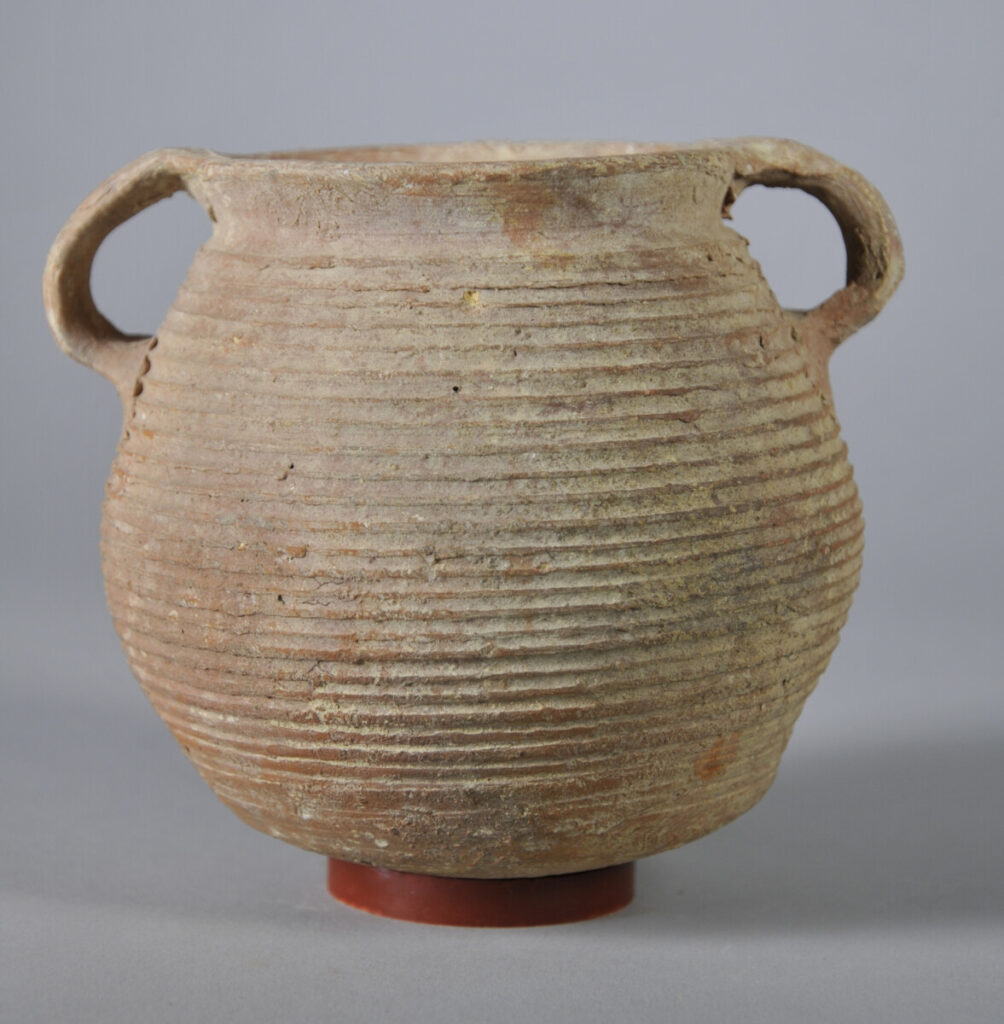
Pot
Roman Period, Jerusalem
37 BCE- 4 CE
Ceramic
5.5” x 4.5”
Carlos Museum, Emory University
2016.19.14
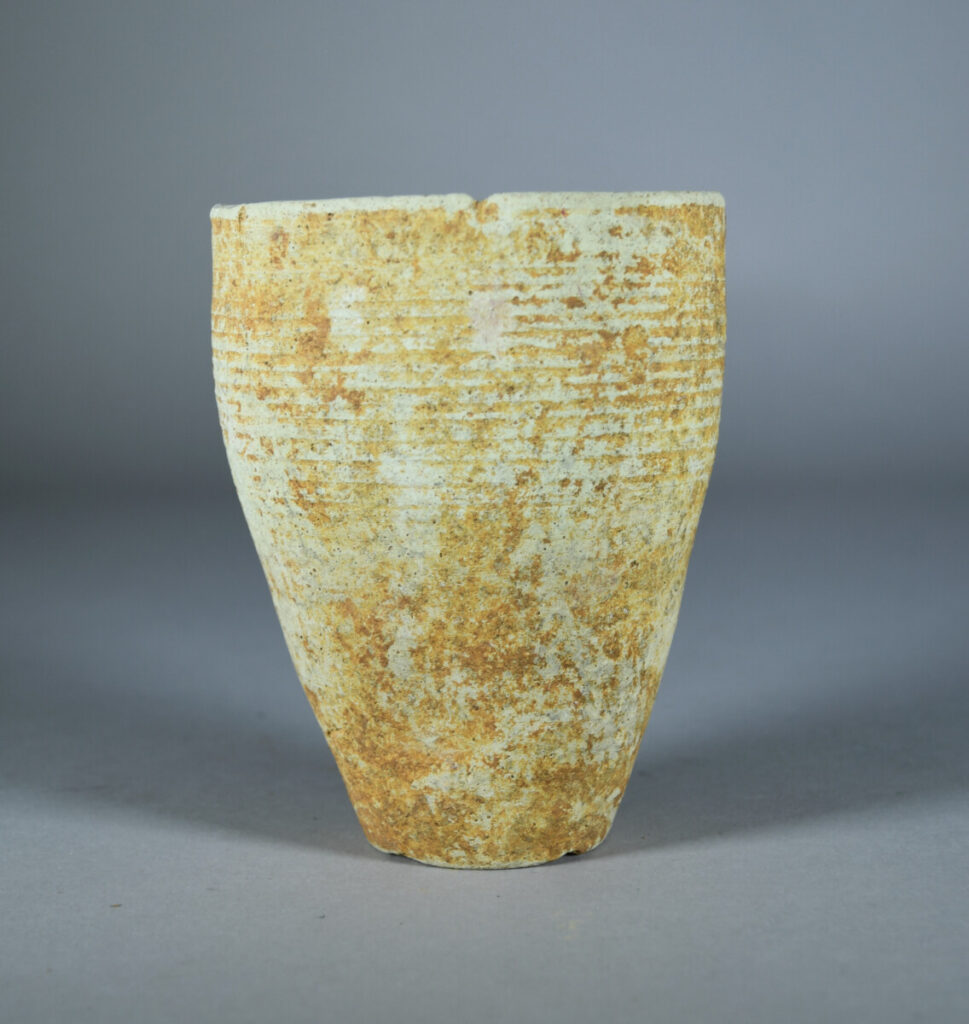
Cup
Roman Period (Caesarea excavations)
1st century CE
Ceramic
5” x 3.75”
Carlos Museum, Emory University
1960.38
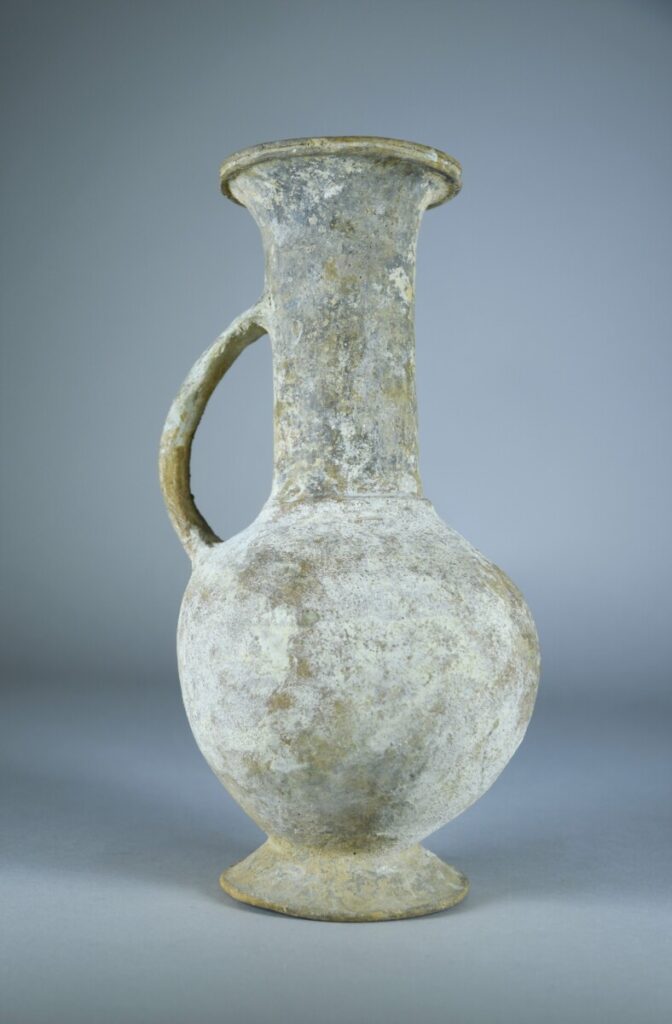
Jug
Canaan
1600 -1200 BCE
Ceramic
Approximately 10”
Carlos Museum, Emory University
1968.264
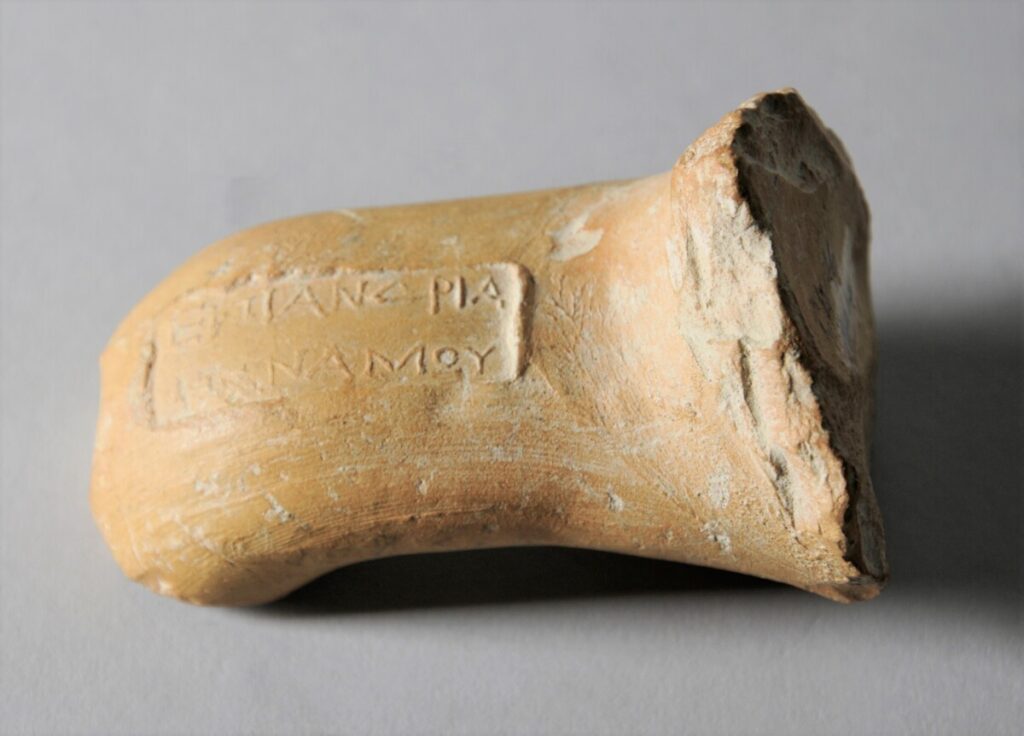
Storage Jar Handle with Stamp from Greek Wine Trade
Selucid (Caesarea excavations)
331 – 64 BCE
Ceramic
7.25” x 2.25”
Carlos Museum, Emory University
1960.45
Classroom Discussion Questions:
What are some instances where food is mentioned in the Torah?
What sorts of foods are traditionally eaten during specific Jewish holidays (Rosh Hashanah, Passover, Shavuot, Tisha B’Av, Purim…)? Do they have any symbolic significance?
What is one symbolic meaning or significance of the pomegranate?
What types of foods are commonly eaten in the modern Middle East? In the ancient Middle East?
Project: Food Tasting
Materials:
- plates
- forks/toothpicks, spoons
- dates
- figs
- pomegranate
- olives
- pita
- hummus/tahini
Instructions:
- set out plates for each student, serve them samples of each food item as desired
Project: Hummus Recipe
Materials:
- 1 can of chickpeas (around 1 1/2 cups)
- 1 large lemon (around 1/4 cup of juice)
- 1/4 cup tahini
- 1 clove of garlic
- cumin, paprika, cayenne (optional, to taste)
- salt and pepper
- 1-3 tbsp water as needed
- combine all ingredients in a food processor or blender
- blend until smooth
- add water slowly to get to desired consistency
- drizzle with olive oil and paprika, serve with vegetables, pita, falafel, etc.
